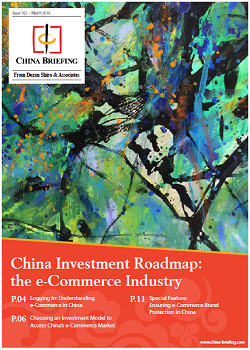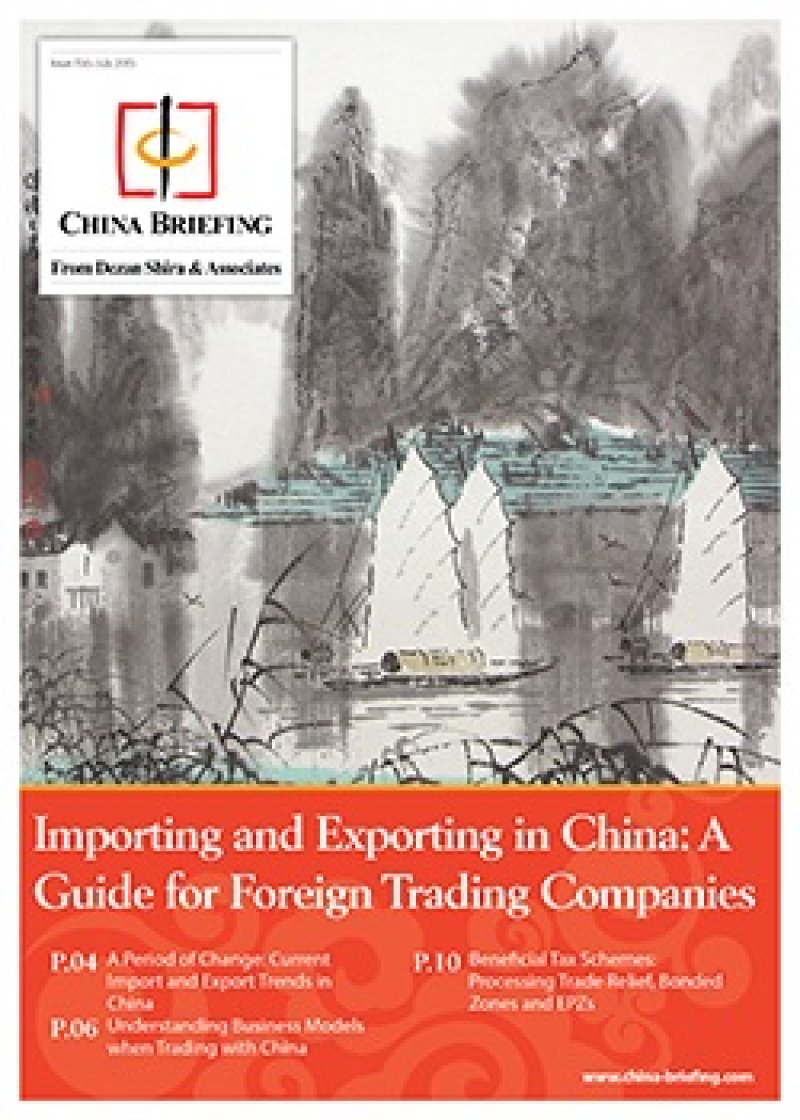China Plugs Cross Border e-Commerce Import Tax Loophole
 By Dezan Shira & Associates
By Dezan Shira & Associates
Editor: Rainy Yao
For the first time in its history, the Chinese government released a circular (“Cai Guan Shui [2016] No.18”) to specifically clarify import tax policies for goods imported under the cross border e-Commerce model, regaining control of its loosely regulated cross border e-Commerce market. The Circular, which will come into force as of April 8, 2016, stipulates that consumers purchasing goods imported under both the direct shipping model and the bonded warehouse model need to pay import taxes including tariffs, import value-added tax (VAT), and consumer tax (if applicable).
Meanwhile, the new policies set a limit of RMB 2,000 for a single transaction and RMB 20,000 for yearly transactions. Transactions within the limit enjoy a temporary zero percent tariff rate, but are still subject to import VAT and consumer tax, which are charged at 70 percent of the taxable amount under the general trade model. Ordinary custom duties apply for transactions exceeding the abovementioned limit, as well as for purchased goods whose duty paying value (DPV) is over RMB 2,000. The Ministry of Finance and relevant departments are still working on a separate “Cross border e-Commerce Retail Imported Commodities List,” which will include the detailed scope of goods that can be imported under the cross border e-commerce model and is expected to be released soon.
Previously, purchased goods imported via cross border e-commerce zones were subject to a special parcel tax, which was much lower than ordinary custom duties. This offered an obvious price advantage and created an unfair tax burden for goods imported under the general trade model. Aiming to reduce the pressure on local manufacturers and customs, the new policy will inevitably increase costs and tax burdens for foreign exporters engaging in the cross border e-commerce industry. This is particularly true for companies selling luxury goods to Chinese consumers, given that the consumer tax on these goods can be extremely high and the zero tariff policy does not apply to transactions of over RMB 2,000.
![]() RELATED: Business Advisory Services from Dezan Shira & Associates
RELATED: Business Advisory Services from Dezan Shira & Associates
Nevertheless, compared to general customs duties levied on imported goods, enterprises who sell general consumer goods to China can still enjoy substantial tax benefits. For example, exporting UHT/fresh milk priced at RMB 100 to China under the general trade model is subject to an import tariff of 15 percent and a VAT of 17 percent:
Tax payable= RMB 100×15% + RMB 100×17% = RMB 32
On the other hand, customers will only pay 70 percent of the 17 percent VAT on the imported milk under the cross border e-commerce model:
Tax payable= RMB 100×70%×17% = RMB 11.9
As seen from the comparison, the cross border e-commerce model often enables foreign merchants to sell imported goods at a lower price, and thus makes their products more competitive on the open market. Additionally, along with the release of the import tax policies, China’s Customs also raised its parcel tax rates from the previous 10-50 percent to 15-60 percent. Detailed information on cross border e-Commerce model and the parcel tax rates levels can be found in our previous article here.
|
Asia Briefing Ltd. is a subsidiary of Dezan Shira & Associates. Dezan Shira is a specialist foreign direct investment practice, providing corporate establishment, business advisory, tax advisory and compliance, accounting, payroll, due diligence and financial review services to multinationals investing in China, Hong Kong, India, Vietnam, Singapore and the rest of ASEAN. For further information, please email china@dezshira.com or visit www.dezshira.com. Stay up to date with the latest business and investment trends in Asia by subscribing to our complimentary update service featuring news, commentary and regulatory insight. |

 China Investment Roadmap: the e-Commerce Industry
China Investment Roadmap: the e-Commerce Industry
In this edition of China Briefing magazine, we present a roadmap for investing in China’s e-commerce industry. We provide a consumer analysis of the Chinese market, take a look at the main industry players, and examine the various investment models that are available to foreign companies. Finally, we discuss one of the most crucial due diligence issues that underpins e-commerce in China: ensuring brand protection.
 Selling, Sourcing and E-Commerce in China 2016 (First Edition)
Selling, Sourcing and E-Commerce in China 2016 (First Edition)
This guide, produced in collaboration with the experts at Dezan Shira & Associates, provides a comprehensive analysis of all these aspects of commerce in China. It discusses how foreign companies can best go about sourcing products from China; how foreign retailers can set up operations on the ground to sell directly to the country’s massive consumer class; and finally details how foreign enterprises can access China’s lucrative yet ostensibly complex e-commerce market.
Importing and Exporting in China: a Guide for Trading Companies
In this issue of China Briefing, we discuss the latest import and export trends in China, and analyze the ways in which a foreign company in China can properly prepare for the import/export process. With import taxes and duties adding a significant cost burden, we explain how this system works in China, and highlight some of the tax incentives that the Chinese government has put in place to help stimulate trade.
- Previous Article Praktische Hilfestellung bei der CCC Zertifizierung und für das After Sales Geschäft – Teil 1
- Next Article Service Sector Dominates as FDI into China Continues to Rise in 2016










